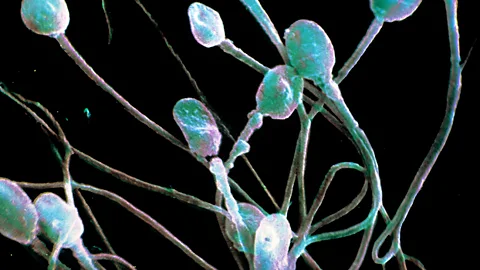Virgin births: Do we need sex to reproduce?

Fatherless pregnancies happen in nature more than we thought, says Frank Swain, so what’s stopping human beings from doing the same?
Sometimes it’s hard to be a woman, as the singer Tammy Wynette famously said. As if doing the reproductive heavy lifting wasn’t bad enough, nature played a cosmic prank in making women need men to complete the task, and giving them a limited window in which to have children.
Perhaps it would be simpler if women could go it alone. After all, not all animals are so hung up on sex. As New Scientist reported earlier this month, virgin births in nature are common. The females of several large and complex animals, such as lizards and sharks, can reproduce without males, a process called parthenogenesis – and now we’re realising it happens in the wild more often than we thought.
So could humans learn this biological trick, allowing women to fall pregnant on their own schedule – without men getting in the way?
It’s a given that, at the very least, women need sperm if they are to conceive. But there’s no reason why that source of sperm ought to be a man. Ten years ago, Japanese researchers unveiled a mouse that had two mothers but no father. Named Kaguya, after a mythical moon princess born in a bamboo stalk, she was created in a laboratory by combining genetic material from two female mice.

With a little bit of help, stem cells from a female donor can be induced to grow into sperm cells – something that would never normally occur. So it might be possible to create a child from two mothers, each of whom contributed half the genetic material. Of course, it’s not quite that simple, as Dr Allan Pacey, a reproductive biologist at the University of Sheffield, explains: “We can make something that looks like a sperm cell down a microscope, but whether it is programmed genetically in the same way is a really difficult thing to establish. I don’t know if there’s a way to check that except to use the sperm and see if the babies develop normally. You can do that in rats and mice but it’s a big step potentially to do that in a human.”
Solo pregnancy
Even if researchers could clear that roadblock, a partner is still required. What if women didn’t need a second person?
In the wild, most females that resort to parthenogenesis do so only when it is strictly necessary – typically when they have become isolated from any males. Should several female komodo dragons wash up on a virgin island, they’ll be able produce males and kick start a brand new colony. Likewise, parthenogenesis in sharks came to light after several incidents in which lone females kept in aquariums inexplicably fell pregnant. But these are testing times for the animals. “Most large animals do not reproduce asexually, because evolutionarily it is not in their interest to do so,” says Pacey. They lose the genetic diversity that keeps a population healthy, he explains.
In theory, it might be possible to produce a child from one woman’s genetic material in the laboratory. The price they would pay, however, would be an alarming genetic bottleneck. When a gene pool is small, the risk of birth defects and other illnesses rises. Take the European royal families, nearly all of which are in some way related. Prognathism, a deformity that causes the lower jaw to jut out, is so common within the European royals that they lent the condition its common name, the Habsburg lip. Poor Prince Charles II of Spain suffered such an extended jaw that he could not even eat properly. In a normal population this condition would be diluted out, but in the tightly-knit European royals it emerged again and again.
Genetic timebomb
Just as inbreeding reduces genetic diversity of a population, self-fertilisation can reduce the genetic diversity of your offspring. If you chose to reproduce entirely on your own, your child would only have one parent, and thus half the genetic diversity available to a normal child. Each subsequent generation of single-parent reproduction would continue that trend, with the increasing risk that normally hidden defects would surface. In this manner, your offspring would suffer a collapse in genetic diversity far worse than any European royal faced. “It’s not a good road to go down,” says Pacey. “You would only really want to do this for one generation or two."

So, if a woman was serious about giving up on sexual reproduction, it would be prudent to set aside some genetic material, a master copy that descendants would use to replace the diversity lost in intervening generations. It would certainly make for a very confusing family tree.
Unfortunately this leapfrogging trick only forestalls the inevitable. Embrace the idea of virgin births exclusively, and your children will only ever be a fading echo of yourself. Tammy Wynette also sang “stand by your man” – while her sentiment may be outdated, the reproductive advice is pretty sound.
